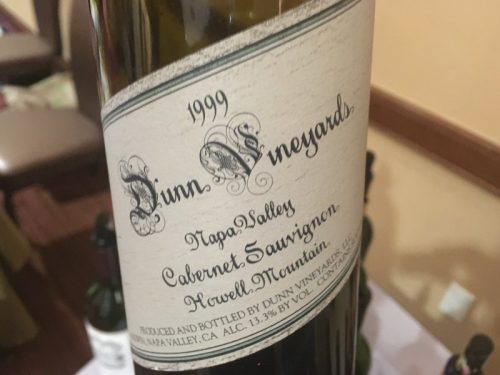
After writing up yesterday’s Napa Cabernet tasting, I dug around and found this report, from a tasting held at the Jackson Family Wines internal meeting in Napa back in May 2017, which I hadn’t previously published.
Napa Valley Cabernet Sauvignon is one of the world’s most famous wine styles, but it’s not without controversy. Sometimes over-ripe and too extracted, it can be a wine of style rather than a wine of place. So this was a good chance to take a guided tour of the stylistic diversity on offer.
Wine and Spirits editor Joshua Greene presented this session on Cabernet Sauvignon. Joshua is an astute taster and has quite strong opinions, and in this sort of context – speaking to a group largely composed of Californian winemakers and viticulturists – these opinions are quite bold.
Josh outlined some of the changes in the California wine scene. Baby boomers, who have sucked up expensive Napa Cabernet on the basis of critic ratings, are retiring. Robert Parker, the most influential of these critics, is retiring. There are changes in connectivity with the rise of the Internet and social media, and there is demographic change. This will eventually impact wine sales and perhaps also wine style.
‘A lot of Napa Cabernet is wine for the 1%,’ says Josh, ‘but globally the 1% has expanded radically. There are a lot more wealthy people around today.’
Josh chose to take us mini-verticals of three different Napa Cabernets. One is a brand that changed dramatically; the second is one that has maintained its essence; the third is one that has evolved.
Josh recalls talking to a Napa winemaker who had been paying $US27 000/ton for his Cabernet Sauvignon. The winemaker told Josh, ‘You would not like this wine but I need to make it this way because of what I pay for the grapes.’ To get the sort of critic ratings from Laube and Parker that will make an expensive Cabernet appeal to the very wealthy, it seems to help if it is made in a certain style.
‘I love this valley and I’m envious of the people who live here,’ says Josh, ‘but, practically, tasting wine blind in my offices, Napa Cabernet is the least diverse it has ever been. This is sad for consumers.’
‘People are making wines because they say this is what our buyers want, but they are making wines that taste the same even if they come from very different terroirs.’
He adds, ‘For me Cabernet is inhabiting the space that Chardonnay once had in California:
formulaic, designed for what people want.’
He highlighted one lone voice: the late Al Brounstein, who for a long time produced balanced Cabernets from his Diamond Creek property. There were three different vineyards with different terroirs. ‘He produced wines that were expressive of those three plots each year,’ says Josh.
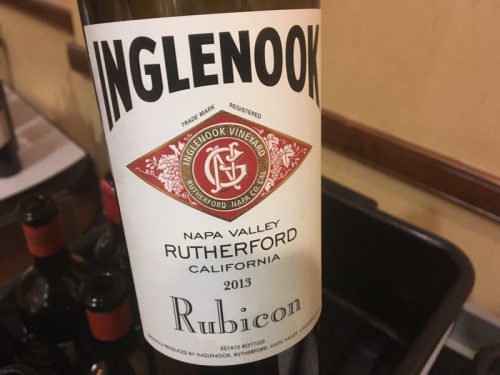
We began with Rubicon, a wine made from the Inglenook property that has been planted to Cabernet since the 1870s, and many consider it to be Napa’s best terroir.
When Francis Ford Coppola brought the property he showed the wine around and was told it lacked freshness. He brought a consultant in, and it didn’t work, and winemaker Scott McLeod left. Coppola interviewed potential new winemakers by bringing them into Inglenook, cooking a meal with them and talking. He hired current winemaker Philippe Bascaules because he was modest and careful, and he thought the approach Philippe took to food would work with wine.
Philippe has moved towards California sprawl in the vineyard (allowing the canopies to spread rather than keeping them in a tight vertical trellis, in order to provide dappled shade for the grapes), and has moved the growing season forwards by early pruning in December, to get ripeness in August and pick the grapes before they get over-mature. He picks early so the wine will work with food. With these three wines we see the traditionally shaped 1991, then a wine from the period of excess, 2007, and now the new, more balanced incarnation.
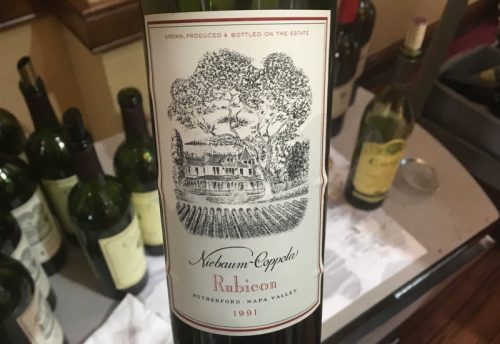
Inglenook Rubicon 1991 Rutherford, Napa Valley
Lovely earthy complexity here with gravels, spice and nice compact blackcurrant fruit. There are hints of tar and some floral cherry notes. Very expressive with lovely evolution. So pretty and detailed with a lovely gravelly, fine grained core. 94/100
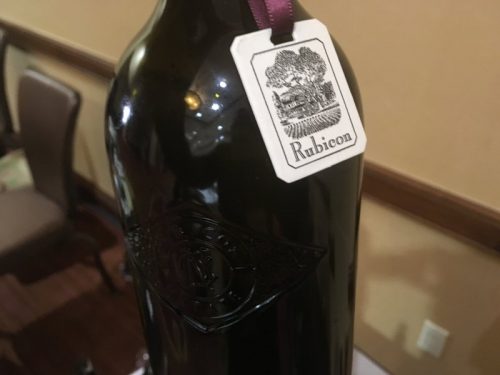
Inglenook Rubicon 2007 Rutherford, Napa Valley
Sweet and ripe with powerful, lush black fruits. It’s quite a rich style with rounded tannins. It’s very appealing but a bit anonymous. 90/100
Inglenook Rubicon 2013 Rutherford, Napa Valley
This is beautiful with lovely freshness and floral black cherry, blackberry and blackcurrant fruit. This has lovely detail and brightness with purity of fruit and fresh, fine tannins. There’s a slightly inky quality here. Vivid and expressive with ripeness but also balance. 95/100
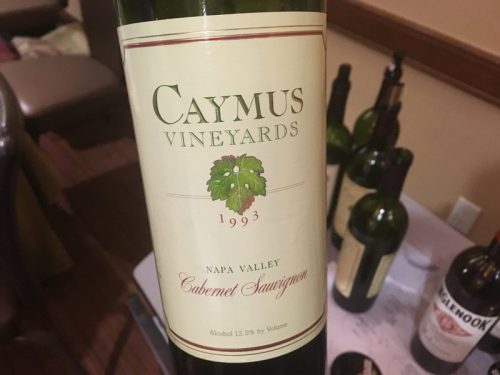
Caymus is a famous Napa Cabernet brand, and they are unusually secretive about their winemaking. They don’t share technical fiches (for example, there’s no information on residual sugar or pH), and they are rumoured to have a concentrator in the cellar. I really don’t like this wine, which I find overly sweet (someone mentioned that they have 1-4% residual sugar), but it sells, and many restaurants feel they need to have Caymus on their list. For me, this is the bad side of Napa. It may be a commercial success, but it’s a wine of style, not a wine of terroir. If you have good terroirs, and Napa does, then make a terroir wine. But this wine could have come from anywhere.
Caymus Cabernet Sauvignon 1993 Napa Valley
Malty and evolved. A bit tired and oxidised. Some red cherry fruit with a warm spicy edge. Very earthy and savoury, and delivers only a limited amount of pleasure, for those who enjoy the taste of decay. 86/100
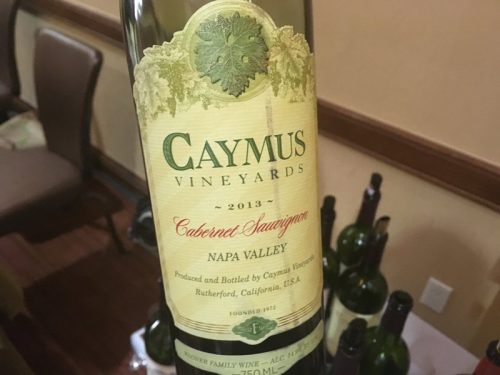
Caymus Cabernet Sauvignon 2013 Napa Valley
Very sweetly aromatic. Incredibly sweet on the nose with a floral black cherry and blackberry character. Ripe, sweet, seductive palate with some sweetness on the finish, and a lush texture. Very rich and intense. This is a crowd pleaser and it’s very seductive, but it’s not serious. 89/100
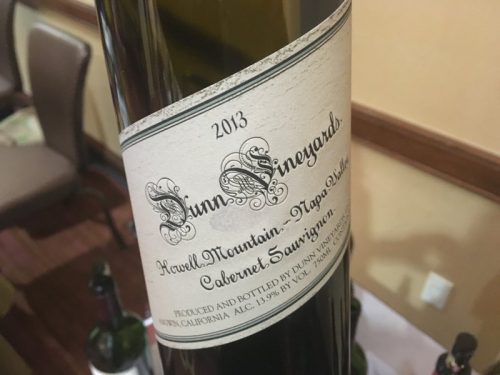
The final example was Dunn. Randy Dunn has been making wines since 1972. You couldn’t drink them early,’ says Josh, ‘because the tannins were so massive.’ The grapes were harvested at 23-24 Brix, and the wines tended to be fabulous 20 years later. Josh pointed out that Randy has stepped back and his son Mike has come in, with a resulting stylistic shift in the wines. Is that a good thing or not? My instinct would be to question why there’s a need to change a winning formula, but the 2013 was quite lovely.
Dunn Howell Mountain Cabernet Sauvignon 1999 Napa Valley
Beautiful, evolved wine with lovely, balanced sweet blackcurrant fruit with a slight gravelly edge and some fine grained tannins. There’s freshness and maturity in harmony here, and it has evolved really nicely, in an old school sort of way. Fresh and a bit grippy, this is drinking perfectly now. 93/100
Dunn Howell Mountain Cabernet Sauvignon 2013 Napa Valley
Brooding blackcurrant nose with a hint of chocolate. Pure and enticing with liqueur-like fruit and some floral aromatics. There’s lovely freshness here on the palate, with sweet black fruits but also some grip and structure underneath. It’s very stylish and should develop nicely over the short and medium term. 94/100
Find these wines with wine-searcher.com
2 Comments on Napa Valley Cabernet, a question of style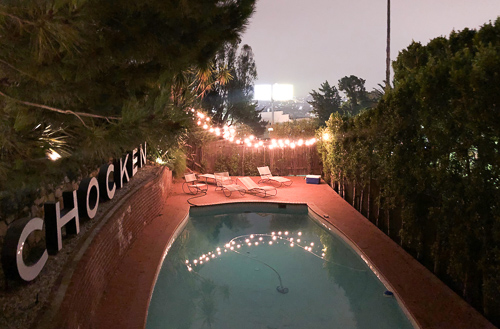
Caymus sucks, no one who really knows wine knows they are over sweat fruit bombs.
While I agree on Caymus not being good wines, I think the problem resides mainly in excess sweetness and lack of balance, not in them not having a “sense of place”, whatever that is. I don’t understand why a “wine of style”, if well made, is something to steer away from. Moreover, who says a wine should “express terroir”? What is that in the first place? Wine should be a delicious, tasteful drink and most people don’t give a damn if it has any sense of origin. Elusive concepts like those are, in my view, what make lots of potential drinkers choose more friendly, less philosophically pretentious beverages.